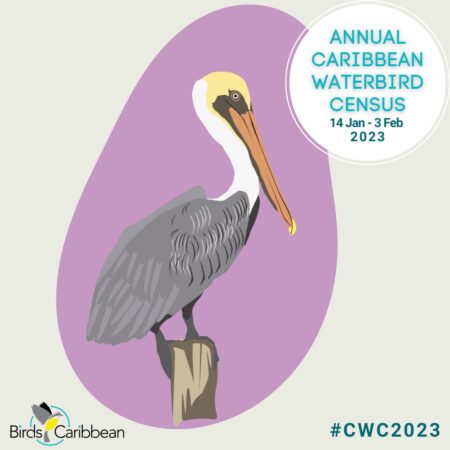
This year we have featured seven waterbirds in our Caribbean Water Census graphic! Find out more about each of these beautiful birds in our blog posts and on social media.
Without a doubt, today’s featured #CWC2023 waterbird is one of the more easily recognized birds by birders and non-birders alike. It’s the Brown Pelican!
Perched on rocks along the coastline or gliding just above the water it’s an unmistakable bird with its large and stocky brown body, oversized bill and long thin neck. Breeding adults have a pale yellow to whitish head, a reddish-brown hindneck, and white fore-neck. Nonbreeding adults have a pale yellow head and white hindneck. Juveniles are overall grayish-brown.
Brown Pelicans feed on small fishes near the surface of the water by diving head first into the water. During a dive they tuck their heads in and rotate their bodies to the left, possibly to protect the trachea and esophagus from impact. Its throat pouch expands to capture the fish and in the process fills with up to 2.6 gallons of water! They sometimes feed by sitting on the surface of the water and capturing prey with their bills or steal food from other seabirds.
Brown Pelicans have relatively large webbed feet which help them to swim and incubate their eggs. Yes, pelicans incubate their eggs by standing on them! The skin on their feet helps keep the eggs warm. During the 1950s, researchers reported that pelican eggs were cracking under the weight of the parents. You might think the parents were getting too heavy but the eggshells were actually thinner. This was caused by the pesticide DDT. Following the strict enforcement of pesticide use regulations, Brown Pelicans made a full comeback from the brink of extinction.
CWC 2023 starts on Saturday January 14th and runs through Friday February 3rd. See below for detailed instructions and free downloadable resources to help you make the most of your waterbird counts and don’t forget to keep an eye out for Piping Plovers!
Enjoy this short video featuring the Brown Pelican!










